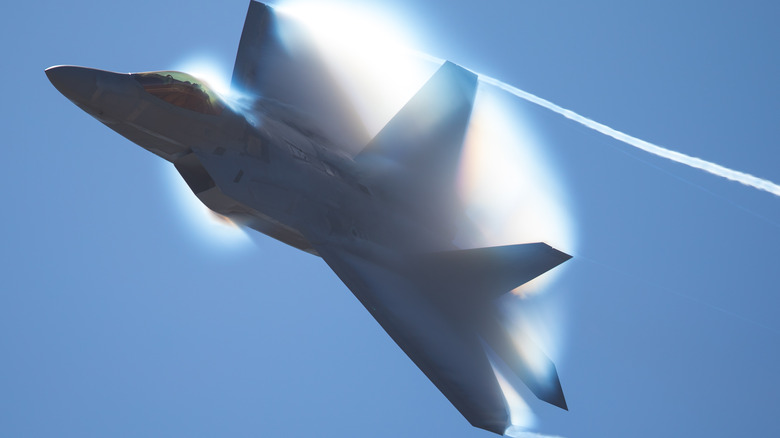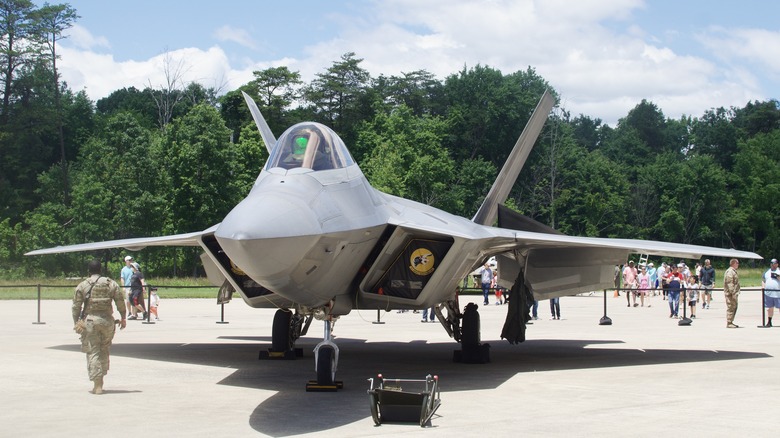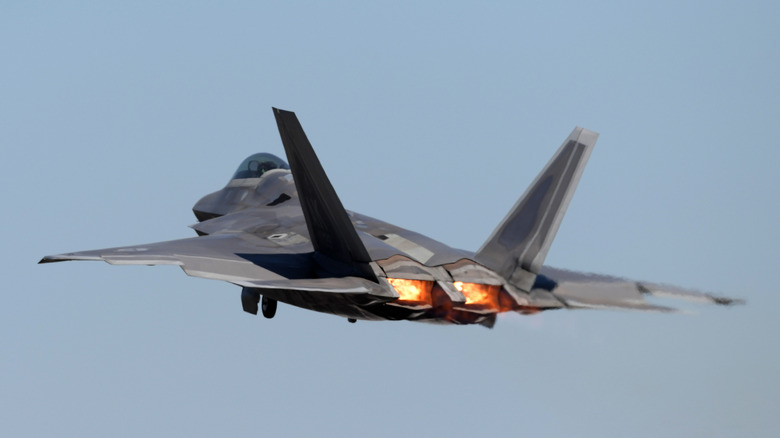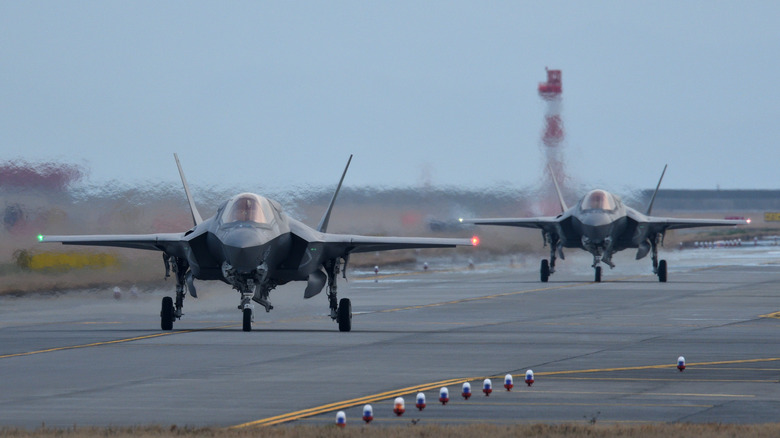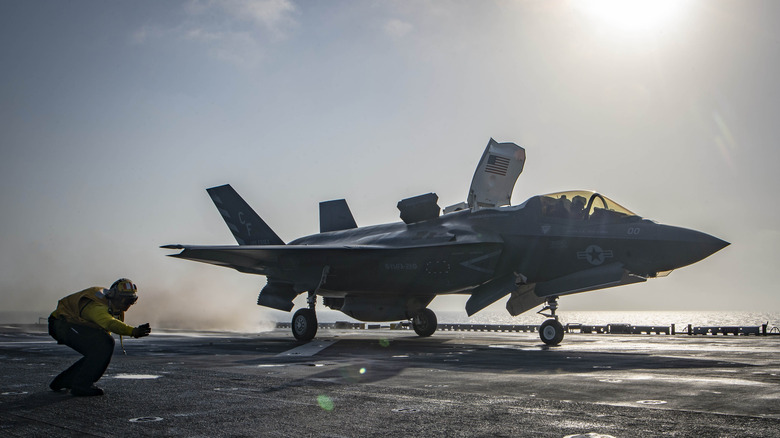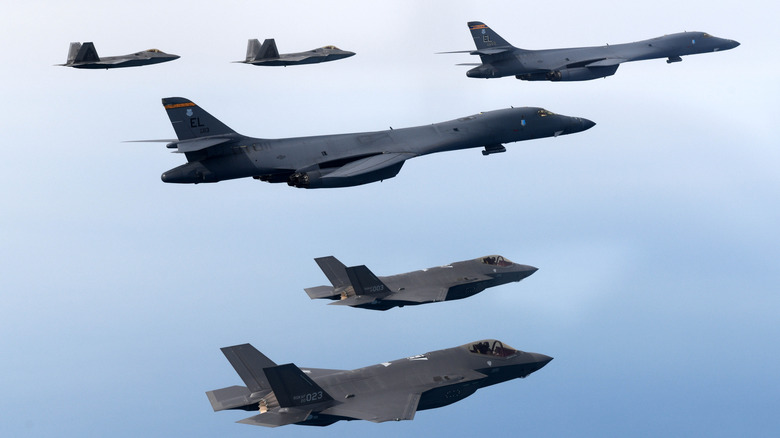F22 Raptor Vs F35 Lightning II: How Do They Compare?
With the missing Lockheed Martin F-35 Lightning II in the news and the shooting down of a Chinese surveillance balloon by an F-22 Raptor in February, the newest crop of American combat aircraft has gotten prominent television air time in 2023. Planes like the F-18 may have been the star of blockbuster movies like "Top Gun: Maverick," but the future of air warfare will likely be fought with Raptors and Lightning IIs.
Both crafts look futuristic and quite similar from the outside, like something you would unlock in a video game after putting in a cheat code. Either plane carries a sinister and stealthy vibe. Even though both aircraft have been in the skies for around two decades, there are still vital details about the Raptor and the Lightning II that are classified and likely won't be made known to the public until well after they've been retired from service.
Yet despite those similarities, the planes are remarkably different from each other. Like any well-rounded military, the U.S. military contracted the F-35 and F-22 Raptor to act in different yet overlapping roles on a modern battlefield.
Lockheed Martin F-22 Raptor: The best in the world
Let's get some important information out of the way: The F-22 Raptor is one of the deadliest pieces of machinery on the planet. No other fighter plane on planet Earth can even come close to the total combat capabilities of the Raptor. China's answer, the Chengdu J-20, meets all of the scary and stealthy criteria, but the technology has been entirely unproven, and it's not clear just how many the country has even produced at this point.
The same can be said for Russia's Sukhoi Su-57. And given both China and Russia's famous tendency to be tightlipped on what's cooking up in either country's respective militaries, it's tough to accurately assess the Chengdu or Sukhoi, primarily because neither plane has been used in combat. The United States Air Force notes: "The F-22 cannot be matched by any known or projected fighter aircraft."
To be fair, the F-22 has not seen any significant deployments in combat (unless a balloon kill counts). The F-22 is capable of what the United States Air Force calls "first-kill opportunity." That means it can find, track, and kill a target aircraft before the enemy pilot even knows the F-22 is there. The F-22 lives up to its classification of "air dominance fighter" in every respect of the word. There are simply no worthwhile competitors even in the space.
The stealthiest fighter around
As for specifications, there's still a lot that is classified. All numbers are estimates, and there are few exact measurements. That said, the F-22's publicly known specifications paint it as an absurdly deadly aircraft. The days of plane-to-plane dogfighting with machine guns may be over, but the Raptor carries an M61 Vulcan 20-millimeter rotary cannon in case air combat devolves into a fistfight. Its weapon bays can carry up to two AIM-9 Sidewinder missiles (the same type that splashed the Chinese spy balloon) and upwards of six AIM-120 radar-guided missiles. The F-22 can also carry two 1,000-pound JDAM (joint-direct attack munition) guided bombs in case the mission calls for a ground attack.
Speed is a primary concern for any fighter aircraft worth its salt, and although exact numbers are not available, the F-22's dual engines output more thrust than any other fighter jet currently in operation at around 70,000 pounds of thrust, more than twice the thrust of the F/A-18 Super Hornet. Its Pratt & Whitney turbofan engines propel the F-22 to upwards of Mach 2. It's also remarkably fuel efficient, with a range exceeding 1,800 miles. With airborne refueling, the F-22 Raptor can get anywhere in the world, and it can get there very quickly.
F-35 Lightning II: The world's new fighter jet
While the F-22 is the absolute tip of the spear, the F-35 will eventually provide the backbone for the United States military and other friendly militaries worldwide. It's classified as a multi-role fighter, meaning it's designed to do whatever the mission dictates and is not strictly a fighter aircraft. It's a little bit of a Swiss Army knife. According to the U.S. Air Force, the F-35 was made to replace most other fighter and ground attack aircraft under its command, including the F-16, F-18, and A-10. Additionally, it is in the process of replacing the Harrier "jump-jet" under the command of the Marine Corps.
Unlike the F-22, which hasn't been exported (and probably won't be), the F-35 has been adopted into the militaries of the United Kingdom, Italy, the Netherlands, Canada, Australia, Denmark, Norway, Israel, Japan, South Korea, Belgium, Poland, Singapore, Finland, Switzerland, and Germany. If you're friendly with the United States and don't mind writing a several hundred million dollar check to Lockheed Martin, you can get an F-35. Compared to the relatively small number of 183 total Raptors, Lockheed Martin says that more than 965 Lightning IIs have been sent to their new happy owners.
Flexibility is key
But just because the United States is willing to export the Lightning II doesn't mean it's a slouch. It's still more than a match for just about every other fighter plane on earth, by its stealth abilities alone, not to mention its combat capabilities. Like most fighter jets, the F-35 hasn't seen much combat, and its current claim to fame is getting lost in the woods of South Carolina.
There are three distinct flavors of the F-35: the F-35A, F-35B, and F-35C. All are powered by a single Pratt & Whitney turbofan engine that produces around 40,000 pounds of thrust, propelling it to a top speed of roughly 1,200 miles per hour. The exact weapons payload is variable but can be around 18,000 pounds of bombs or missiles. According to Lockheed Martin, the "A" variant is the most common F-35 and performs the role of a fighter or bomber, depending on the mission. The "B" version, the same version lost in South Carolina, is capable of short takeoffs and vertical landings thanks to its ability to hover in place. Lastly, the "C" version is for use on the decks of aircraft carriers. The F-35 is also suited for electronic warfare and ground attack missions.
Different planes for different jobs
The F-22 excels in straight lethality, and the F-35 gets high marks in flexibility. If you want an enemy aircraft destroyed right now, the F-22 is the aircraft for the job. If you need a widely capable substantive core of your fighter fleet, the F-35 is your plane, hence the adoption by so many countries. Both planes are fighter aircraft, and both are capable of dropping a bomb if the need arises. And most importantly, both are stealthy and can avoid detection by the enemy.
The Raptor wins in sheer speed and the ability to get in and out of the combat arena without the enemy knowing what happened. The Lightning II, like its namesake, the P-38 Lightning, can be outfitted for whatever job comes its way, whether it's carrier operations, impressing everyone at an airshow while hovering, or providing vital information to friendly forces in the air, on the ground, or the sea.
To use two cars as a comparison, the F-22 is a Bugatti Chiron, the absolute best in its field, bar none. The F-35 is a Ford F-150 Lightning, remarkably advanced in every way without sacrificing usability.
